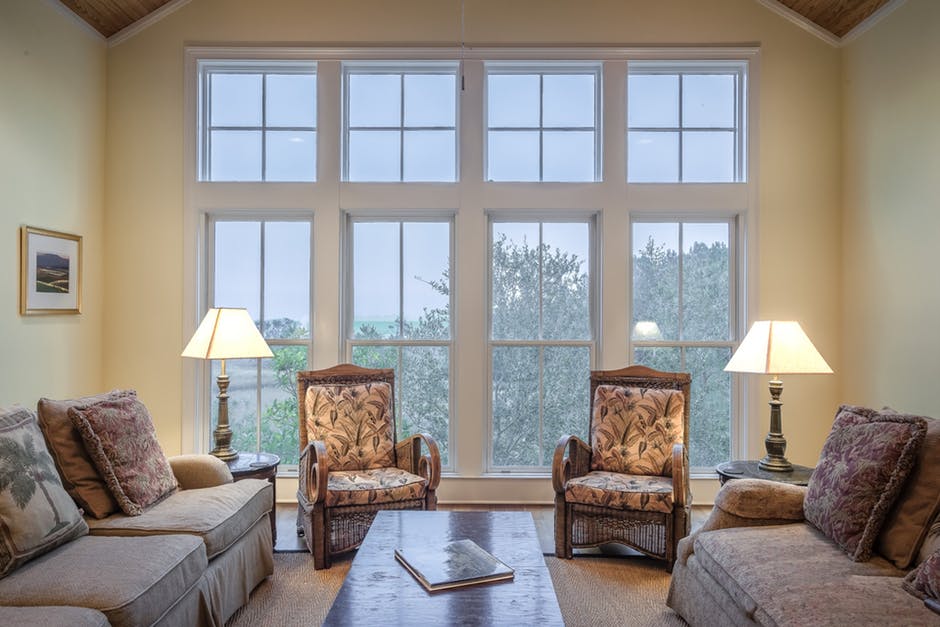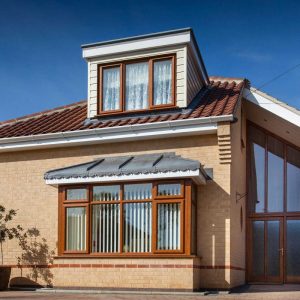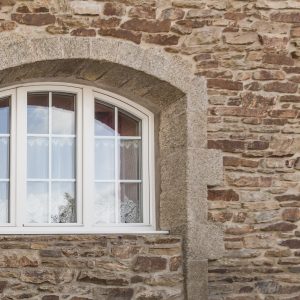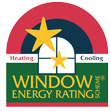Low-E Glass VS Double Glazing: Why Is Double Glazing More Efficient?
7 September 2018
Learn More Contact UsAs humans, we need light, fresh air, and (hopefully) nice views out of our windows. But did you know that you could be losing up to 30% of your home’s energy through your windows?
No, you don’t have to board up all your windows to trap in the heat! You may just need to update them.
Today, you’re almost spoilt for choice when picking out windows for your home. Windows are made to be energy efficient and can dramatically reduce your heating costs.
But, you may be wondering: what’s the difference between Low-E glass and double-glazed windows? Low-E glass VS double glazing, which is the better choice?
Don’t worry! Here at Ecovue, we’ve done all the research for you. Read on to find out which option is the best choice for your home.
What Is Double-Glazed Glass?
Traditional double-glazed windows are an energy efficient sealed glass unit comprising two sheets of glass.
The glass is separated by a spacer bar to create a small gap between the panes. This air gap, which is often filled with the inert gas, argon, creates a break between the inside and outside of the window which provides insulation. The optimal air gap size should be about 9 mm.
The insulation gap in a double-glazed glass not only helps to keep the heat in, but it also helps to reduce any outdoor noise, such as traffic.
What Is Low-E Glass?
Low-E glass is a treated glass that is designed to control the passage of heat.
The “E” stands for emissivity, which basically means that the glass coating allows less heat to pass through the glass. There is an extremely thin layer that coats the glass, but you can’t see a difference in colour.
The energy efficient glass allows light to pass through while it blocks UV light, which generates heat. This should result in less artificial cooling methods that are required to keep the room at the desired temperature.
Low-E Glass VS Double Glazing
As tech advances and more options come on the market, it can be challenging to know what is the best option for you. Many say that Low-E glass is better than double-glazed glass, is that true?
In a word, no. It really depends on the purpose of the windows, the location of your home, and the climate. Let’s take a deeper look.
The SGHC
Double glazed windows let in more daylight than Low-E glass. How can you be sure?
An SGHC number (Solar Heat Gain Coefficient) is the amount of radiation (light and heat) that is admitted through a window. The number is between 1 and 10. The lower the number, the less heat and light it transmits.
The SGHC of glazed windows is generally higher than Low-E windows. This means more light and more heat comes through.
Keeping Warm
If you are relying on your north facing windows to bring in some heat in the winter, then you may be disappointed with Low-E glass. No natural rays of sunlight will be able to penetrate through the glass, which may leave your rooms feeling chilly.
Double-glazed glass keeps heat inside the building. This is especially beneficial for the winter, as natural sunlight will shine through your windows and heat your rooms.
Keeping Cool
If your windows need to reject heat, then Low-E glass is a good option. As the sun hits your window, less heat will enter into the room due to the glass coating. This can be especially useful in the summer months.
However, if your home has appropriate shade available from trees or other buildings, you will receive no benefit from installing Low-E glass. But if there is inadequate shading in summer, the Low-E glass may help to keep your home cooler.
Due to their insulative properties, double glazed windows are also able to keep in the cool air from your air conditioning unit.
Although, if the strong sunlight is streaming through your windows on a hot summer day, you may need your A/C unit to work a little harder. However, shading from trees or even curtains and blinds can help to solve this minor issue.
The Noise
Double-glazed windows can reduce any outside noise, whereas Low-E windows aren’t made to reduce noise unless you pay for it as an added feature.
The Cost
Low-E glass windows are generally cheaper than double-glazed windows. But in the cooler months of the year, you may spend more money on mechanical heating for your home.
Double-glazed windows might be a little pricier in the beginning, but they are great for winter and only require a bit of shade to be efficient in the summer. This means they may end up being cheaper in the long run.
The Verdict
Both products are great, but it all depends on the needs of the home.
If your home gets very hot and is openly exposed to the elements, Low-E windows may be the better choice. But you also need to think about the winter months. Your heating bills may increase, and you won’t benefit from any of the little sunlight that shines through on those freezing days.
Whether you have tilt and turn windows, French casement windows, or something else, double-glazed windows seem to be the best choice from both sides.
You can keep cosy in the winter by trapping the heat from the sun within your home. And in the summer, the cool air will stay inside to regulate the temperature. All you need is some blinds or curtains to stop any heat passing through on those sweltering days!
And if your area is particularly noisy, double glazing can also help to reduce any unwanted noise pollution.
Clear Decisions
We hope this Low-E glass VS double glazing has helped you to “see clearly” when it comes to choosing the right type of windows for your home. Take a look at your home, figure out what you realistically need and make a clear decision.
If double-glazed windows are the right choice for you, check out our range and get in touch today.













